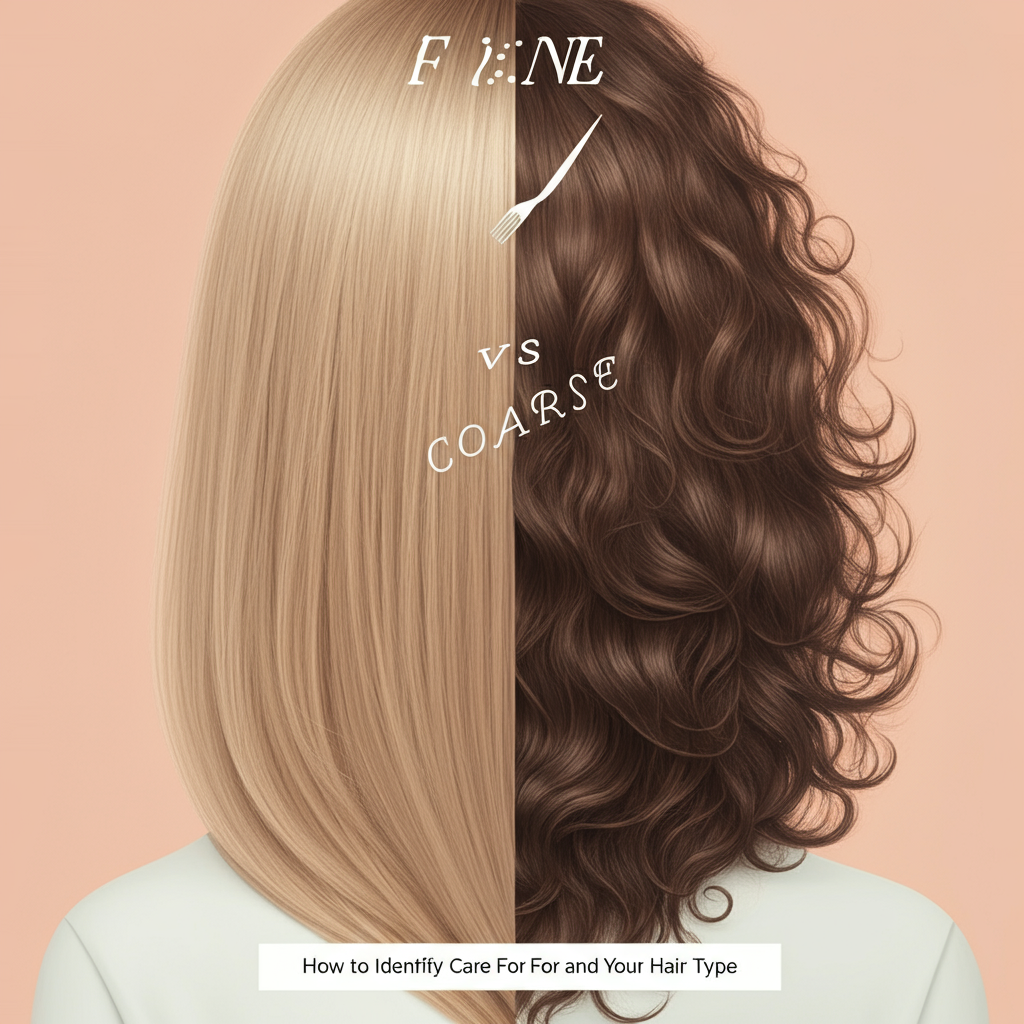
Introduction
Many people confuse hair density with hair strand thickness, but understanding whether your hair is fine or coarse is the first step to building a perfect hair care routine. You might think you have “thin” hair when what you really have is fine hair, or “thick” hair when it’s actually coarse. This distinction is crucial because it dictates everything from the shampoo you buy to the way you style your locks. Using the wrong products or techniques can lead to a host of problems, like greasy roots, flat styles, or untamable frizz.
This comprehensive hair type guide will demystify the world of fine vs coarse hair. We’ll explore the fundamental differences in hair texture, help you identify your own hair type with simple at-home tests, and provide tailored care and styling advice. By the end of this post, you’ll have the knowledge to work with your hair’s natural structure, not against it, unlocking its full potential for health and beauty.
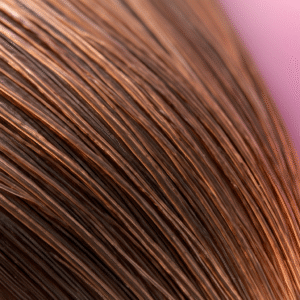
What Does Fine Hair Mean?
When we talk about fine hair, we are referring to the diameter of each individual hair strand. Fine hair simply means that the strands are small in diameter and delicate. It’s a measure of texture, not density. It’s entirely possible to have a lot of fine hair, which would mean you have high-density, fine-textured hair.
Fine hair is composed of just two layers: the cortex (the inner part that provides strength and color) and the cuticle (the outer protective layer). It lacks the innermost layer, the medulla, which is present in coarser hair types. This structural difference is a key reason for its unique characteristics.
Fine Hair Characteristics
Identifying fine hair goes beyond just a feeling. Here are the key fine hair characteristics to look for:
- Silky, Soft Texture: Fine hair strands are incredibly smooth and soft to the touch. They often feel light and airy.
- Gets Oily Quickly: Due to the smaller surface area of each strand, sebum (natural oil) from the scalp can travel down the hair shaft more easily, leading to roots that look greasy faster than other hair types.
- Prone to Breakage: The lack of a medulla and smaller diameter makes fine hair more fragile. It’s susceptible to mechanical damage from brushing, heat styling, and even tight hairstyles. Hair breakage prevention is a top priority.
- Lacks Volume: A common complaint among those with fine hair is that it lies flat against the head. It can look limp and struggle to hold volume or styles like curls for an extended period.
- Common Hair Types: While any hair type can be fine, it’s most common in straight and wavy hair, classified as Type 1 and Type 2.
What Does Coarse Hair Mean?
On the opposite end of the spectrum is coarse hair. Again, this refers to the hair strand thickness. Coarse hair strands have a large, wide diameter. People with coarse hair might feel they have an unmanageable amount of hair, but like fine hair, this is about texture, not the number of strands on your head.
Structurally, coarse hair is the most robust. It contains all three layers: the cuticle, the cortex, and the medulla. This inner medulla layer adds extra bulk and strength to each strand, contributing to its distinct feel and behavior.
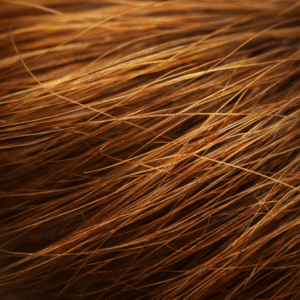
Coarse Hair Characteristics
If you suspect you have coarse hair, look for these defining coarse hair characteristics:
- Feels Rough or Wiry: A single strand of coarse hair feels noticeably thick and textured when rolled between your fingers. It can sometimes have a wiry or stiff quality.
- Naturally Voluminous and Strong: Coarse hair has built-in body and volume. Its substantial structure makes it very strong and more resistant to breakage from styling and chemical processes compared to fine hair.
- Prone to Dryness and Frizz: The thick cuticle layer of coarse hair can have a harder time retaining moisture. Gaps in the cuticle allow moisture to escape easily, which often leads to dryness and makes it susceptible to frizz, especially in humid weather. Frizz management is a constant battle.
- Common Hair Types: Coarse texture is very common in curly and coily hair, also known as Type 3 and Type 4 hair. However, it’s possible to have coarse, straight hair as well.
Fine vs Coarse Hair: The Key Differences Summarized
To make it even clearer, let’s break down the direct comparison between fine vs coarse hair. Understanding these distinctions is the key to unlocking the right care routine for your mane.
|
Feature |
Fine Hair |
Coarse Hair |
|---|---|---|
|
Strand Diameter |
Small and delicate |
Thick, wide, and robust |
|
Texture |
Smooth, soft, and silky |
Rough or wiry to the touch |
|
Strength |
Fragile and breaks easily |
Strong but can be brittle when dry |
|
Volume |
Tends to be flat and limp |
Naturally voluminous and full-bodied |
|
Moisture |
Gets greasy quickly as it holds moisture well |
Struggles with moisture retention, leading to dryness |
|
Common Problems |
Breakage, lack of volume, oiliness |
Frizz, tangling, dryness, unruliness |
|
Ideal Care Focus |
Strengthening, volumizing, and clarifying |
Deep hydration, frizz control, and sealing moisture |
One important note is the difference between hair density vs hair thickness. Hair thickness (or texture) refers to the diameter of the individual strand (fine vs coarse). Hair density refers to the number of strands on your scalp (thin vs thick). You can have fine hair that is dense (thick), or coarse hair that is not dense (thin). This guide focuses on the texture of your strands—fine vs coarse.
How to Tell if You Have Fine or Coarse Hair
Ready to become your own hair detective? You don’t need a lab or a fancy microscope. You can easily figure out your hair strand thickness with these simple DIY hair tests at home. For the best results, make sure your hair is clean and free of product.
1. The Strand Comparison Test
This is the most straightforward method. Pluck a single strand of your hair—don’t worry, you have plenty! Roll it between your thumb and index finger.
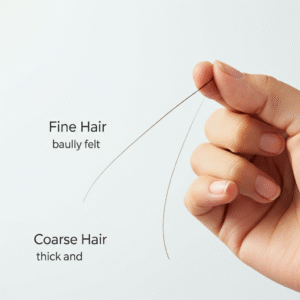
- Fine Hair: If you can barely feel the strand, or it feels like an ultra-fine, silky thread, you have fine hair. Many people report not being able to feel it at all.
- Coarse Hair: If you can distinctly feel a thick, substantial strand, you have coarse hair. It might feel slightly rough or wiry.
- Medium Hair: If your hair feels like something in between—neither invisible nor overly thick—you likely have medium-textured hair.
2. The Thread Test
This test provides a great visual comparison. Take one of your hair strands and lay it next to a standard piece of sewing thread.
- Fine Hair: Your hair strand will be noticeably thinner than the sewing thread.
- Coarse Hair: Your hair strand will appear thicker or wider than the thread.
- Medium Hair: The strand will be roughly the same thickness as the thread.
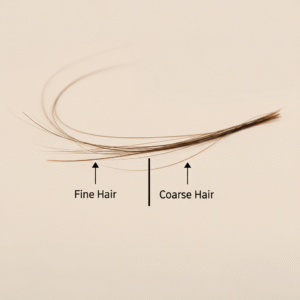
3. The Light Test
Hold a single hair strand up to a light source, like a window or a lamp.
- Fine Hair: The strand may appear translucent or almost invisible against the light. It can be difficult to see clearly.
- Coarse Hair: The strand will be easily visible and look like a solid, opaque line.
After performing these tests, you should have a clear answer on the fine vs coarse hair debate for your own head. Now, you can move on to addressing the specific challenges your hair type faces.
Common Challenges for Fine Hair
While its soft texture is enviable, caring for fine hair comes with a unique set of hurdles. Addressing these issues is all about using the right products and techniques to add strength without weighing the hair down.
- Breakage: This is the number one enemy of fine hair. The fragile strands can snap from aggressive brushing, heat, chemical treatments, or even the friction from your pillowcase. Hair breakage prevention requires a gentle touch.
- Lack of Volume: Fine hair’s tendency to lie flat can be frustrating. It often lacks the natural body to hold voluminous styles, causing blowouts to fall and curls to droop within hours.
- Oily Scalp and Greasy Hair: Fine hair’s structure allows scalp oils to travel down the shaft quickly, making it look greasy just a day after washing. This leads many to over-wash, which can strip the hair and scalp, sometimes exacerbating the problem.
- Styling Issues: Beyond holding volume, fine hair can be too silky and smooth to hold styles like updos or braids without slipping out. It requires products that add grit and hold.
Common Challenges for Coarse Hair
Coarse hair is strong, but it’s not invincible. Its primary challenges revolve around hydration and manageability.
- Dryness: This is the core issue for most people with coarse hair. The strand’s structure makes it difficult for natural oils to travel down from the scalp, and its cuticle is more prone to lifting, allowing moisture to escape.
- Frizz: Dryness and frizz go hand-in-hand. When the hair is dehydrated, the outer cuticle layer lifts and pulls in moisture from the air, causing the strand to swell and appear frizzy. Frizz management is a daily task.
- Tangles and Knots: The rougher texture of coarse hair, especially if it’s also curly, can cause strands to intertwine and form knots easily. Detangling can be a time-consuming and potentially damaging process if not done correctly.
- Difficulty Styling: While coarse hair holds a style well once set, getting it there can be a challenge. It can be stubborn and resistant to styling, often requiring more product and higher heat settings to become pliable—which can lead to more dryness and damage.
The Ultimate Care Routine for Fine Hair
Your fine hair care routine should focus on two main goals: strengthening the strands to prevent breakage and adding volume without causing buildup.
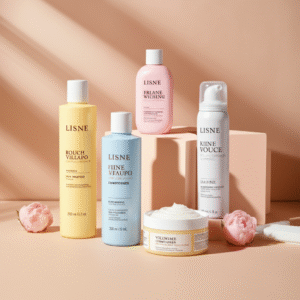
1. Cleansing
The right shampoo is your foundation. Look for formulas described as “volumizing,” “clarifying,” or “lightweight.” These shampoos are designed to remove excess oil and product residue without leaving behind heavy ingredients. Avoid shampoos that are heavily creamy or contain rich oils and butters, as they will weigh your hair down. Washing every other day is often a good balance to maintain cleanliness without over-stripping your scalp.
2. Conditioning
Conditioner is essential, but application is everything. Apply a lightweight conditioner only from the mid-lengths to the ends of your hair. Applying it near the roots will almost guarantee a flat, greasy look. Opt for conditioners that contain strengthening ingredients like hydrolyzed proteins. These protein treatments help patch up weak spots in the hair cuticle, reducing breakage.
3. Styling for Volume
Styling fine hair is all about creating lift at the root and adding texture.
- Mousse is Your Best Friend: Apply a volumizing mousse to damp roots before blow-drying. This will provide lift that lasts.
- Root-Lifting Sprays: These target the roots specifically to give your hair a boost.
- Dry Shampoo: Even on clean hair, a little dry shampoo at the roots can absorb oil and add texture and volume.
- Blow-Drying Technique: Flip your head upside down and blow-dry your roots in the opposite direction of how they naturally fall. This creates maximum volume.
4. Weekly Treatments
Once a week, use a gentle protein treatment to reinforce the hair structure. Be careful not to overdo it, as too much protein can make fine hair feel stiff. Alternate with a lightweight hydrating mask if you feel your ends are dry, but always prioritize strength.
The Ultimate Care Routine for Coarse Hair
A coarse hair care routine is centered on moisture, moisture, and more moisture. The goal is to deeply hydrate the hair and seal the cuticle to lock in that moisture and fight frizz.
1. Cleansing
Choose a moisturizing, hydrating, or smoothing shampoo, preferably one that is sulfate-free. Sulfates can be very stripping and exacerbate dryness in coarse hair. Many people with coarse hair also benefit from co-washing, which means washing with conditioner instead of shampoo, either every other wash or exclusively. This gently cleanses without stripping natural oils.
2. Conditioning and Deep Conditioning
Never skip conditioner. After shampooing, apply a rich, creamy conditioner from root to tip, focusing on the ends. Use your fingers or a wide-tooth comb to detangle while the conditioner is in. This is the most important step for moisture retention.
At least once a week, swap your regular conditioner for a deep conditioning treatment or a thick hair mask. For extra penetration, put on a shower cap and let the mask sit for 20-30 minutes. The heat from your scalp will help the product absorb more deeply.
3. Styling for Frizz Control
Managing coarse hair often means layering hydrating styling products.
- Leave-In Conditioner: This is a non-negotiable first step on damp hair. It provides a base layer of moisture and makes hair easier to manage.
- Creams and Oils: Apply a hair cream, butter (like shea butter), or oil (like argan or jojoba oil) to seal in the moisture from the leave-in conditioner. This helps smooth the cuticle and prevent frizz.
- Anti-Frizz Serums: As a final step, a silicone-based serum can add shine and provide a protective barrier against humidity.
- Protective Hairstyles: Styles like braids, twists, and buns can help protect coarse hair from daily friction and moisture loss.
4. Monthly Treatments
Coarse hair needs a balance of moisture and protein. While the daily focus is on moisture, a protein treatment once a month can help reinforce the hair’s structure, especially if it’s color-treated or heat-styled often. Always follow a protein treatment with a deep moisturizing mask to restore softness.
Best Products for Fine vs Coarse Hair
Navigating the hair care aisle can be overwhelming. Here’s a cheat sheet for the types of products that work best for each hair texture.
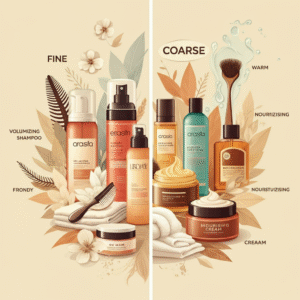
For Fine Hair:
- Volumizing Shampoo: Cleanses without leaving residue.
- Lightweight Conditioner: Hydrates ends without weighing down roots.
- Root-Lifting Mousse or Spray: Creates lift and body at the scalp.
- Texturizing Spray or Dry Shampoo: Adds grip and a fuller appearance.
- Lightweight Leave-In Spray: For detangling and heat protection.
For Coarse Hair:
- Hydrating, Sulfate-Free Shampoo: Cleanses gently while preserving moisture.
- Rich, Creamy Conditioner: Softens and helps detangle.
- Deep Conditioning Hair Mask: Provides an intense weekly moisture boost.
- Leave-In Conditioner: An essential base layer of hydration.
- Rich Hair Creams, Butters, or Oils: Seals the cuticle to lock in moisture and fight frizz.
- Anti-Frizz Serums: Adds a final layer of smoothing and shine.
Common Hair Care Mistakes to Avoid
Even with the right products, bad habits can sabotage your hair health.
For Fine Hair:
- Over-Conditioning: Applying heavy conditioners or applying any conditioner to the roots will leave your hair flat and greasy.
- Rough Detangling: Brushing wet, fine hair aggressively is a recipe for breakage. Use a wide-tooth comb and start from the ends, working your way up.
- Overuse of Heat: High heat settings damage delicate fine strands. Always use a heat protectant and the lowest effective temperature.
- Using Too Much Product: Fine hair is easily weighed down. Start with a tiny amount of product and add more only if needed.
For Coarse Hair:
- Skipping Deep Conditioning: Regular conditioning isn’t enough. Coarse hair needs weekly deep treatments to combat its natural tendency toward dryness.
- Using Products with Drying Alcohols or Sulfates: These ingredients strip moisture, leading to more frizz and brittleness.
- Neglecting Nighttime Care: Sleeping on a cotton pillowcase can suck moisture from your hair and cause friction. Use a silk or satin pillowcase or wrap your hair in a satin scarf or bonnet.
- Shampooing Too Often: Over-washing strips the scalp of the natural oils that coarse hair desperately needs.
Lifestyle and Diet for Healthy Hair
Regardless of your hair type, healthy hair habits start from within. A balanced diet and healthy lifestyle choices will improve the health of both fine and coarse hair.
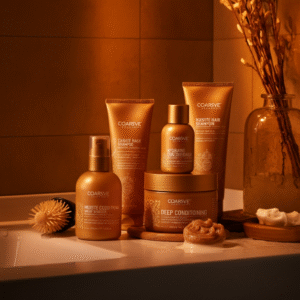
- Eat Your Protein: Hair is made of protein, so ensure you’re eating enough protein-rich foods like eggs, fish, nuts, beans, and lean meats.
- Hydrate, Hydrate, Hydrate: Drinking plenty of water is crucial for overall hydration, which includes your hair and scalp.
- Get Your Vitamins and Minerals: Nutrients like iron, zinc, biotin, and vitamins C, D, and E are vital for strong, healthy hair growth.
- Manage Stress: High stress levels can contribute to hair shedding. Incorporate stress-management techniques like exercise, meditation, or yoga into your routine.
Frequently Asked Questions (FAQs)
1. How do I know if my hair is fine or just thin?
Fine hair refers to the diameter of each strand, while thin hair refers to the density (how many strands you have). You can have fine hair that is thick (high density) or coarse hair that is thin (low density). Use the strand and thread tests to determine if your hair is fine, and check how much of your scalp is visible to gauge density.
2. Can fine hair become coarse, or vice versa?
Hair texture is primarily determined by genetics, so you can’t permanently change fine hair to coarse or the other way around. However, factors like hormonal changes (pregnancy, menopause), medications, and aging can alter your hair’s texture over time, sometimes making it feel finer or coarser than it used to be.
3. What hairstyles work best for fine vs coarse hair?
For fine hair, blunt cuts like bobs or lobs can make the ends look thicker. Layers can add movement, but too many can make the hair look even thinner. For coarse hair, layers are fantastic for removing bulk and adding shape. Long, flowing styles and strong updos work well, as the hair has the strength to support them.
Embrace Your Natural Texture
Understanding the difference between fine vs coarse hair is the most empowering step you can take on your hair care journey. Instead of fighting against your hair’s natural tendencies, you can now choose the right products, develop the perfect routine, and adopt healthy habits that will make it thrive. Whether your hair is silky and fine or voluminous and coarse, learning to care for it properly will help you love the beautiful hair you were born with.
Once you’ve mastered your hair’s texture, you might be interested in learning more about its other properties. Check out our upcoming guides on determining your hair’s porosity and finding the perfect routine for your specific curl type.





Leave a Reply